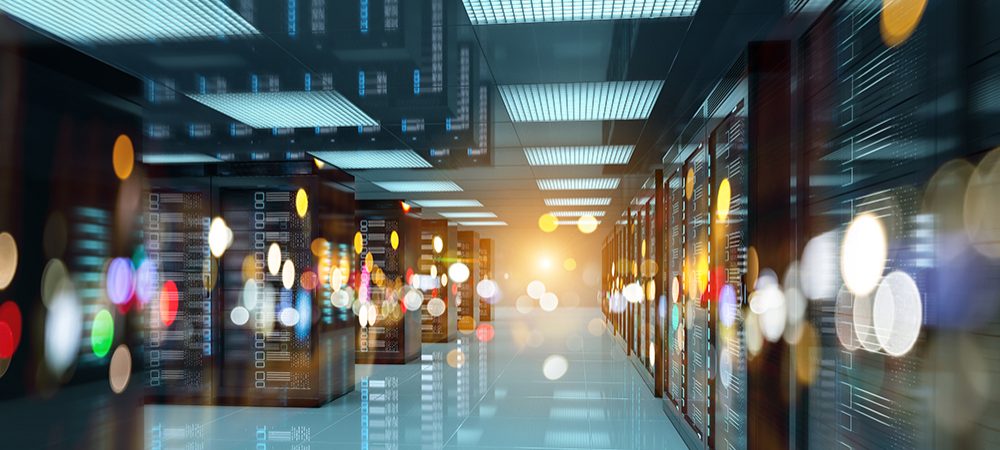Paul Mott, Global Technical Product Manager of Power Solutions at Raritan, tells us how the company is helping end-users drive automation in the data center, offering ‘Swiss Army Knife’ adaptability with its Smart Rack Controllers solution and providing the ‘godsend’ of remote monitoring to prevent downtime.

Can you tell me what challenges data center operators are facing when it comes to tracking their many devices?
The traditional approach using hand scanners and things of that nature to track devices throughout an organization has been used for a long time and there’s nothing wrong with it.
The only challenge is there is a lot of human intervention that needs to happen. Humans are imperfect beings so anytime a human touches something there’s always that opportunity for an error to happen.
What we’re seeing is a kind of shift towards a more automated way to manage and track assets and you need to consider some of the value that you can get out of that – things like being able to do widescale audits very quickly without deploying a whole team of people into various enterprise locations to be able to track things and being able to do it remotely from a console that could be somewhere across an ocean or on the opposite side of the world.
So there are tons of advantages to re-evaluating the traditional way that an organization may track its assets, although it’s still fundamentally a key aspect of a lot of organizations. There’s opportunity for optimization moving forward.
How have the data center management requirements changed over recent years?
Primarily from the power side of things we’re seeing an increase in density pretty much across the board and it just continues to go up. We’re seeing typical enterprises and even colos, and really all types of data center environments, having this challenge where they need to put more equipment into the same footprint that they’ve had before.
And they’re having to work out whether or not they need to use things like containment to better control the cooling or the exhausting of heat and consider how they’re distributing power and how they’re monitoring and managing their environments and ask what tools they need to be able to do that effectively.
So it’s interesting, we’re kind of at a point where we’re starting to see a shift away from maybe the older styles of monitoring and management and more towards a more sophisticated way of monitoring and collecting data in and around the white space to gain more insights.
Why is good physical security crucial for data center operators?
Physical security is really important. A traditional data center will have a number of different layers of physical security from the gate outside the data center, maybe it’s a colo or wholly- owned data center and usually there’s some sort of perimeter security.
And then there’s usually two or three layers of inner security as well, you may have a gate or a mantrap at the building entry and then subsequent layers of doors with card access and biometrics to actually get into a room that has computers.
From there you’ll typically have one or two approaches. You’ll have the key method or in some cases you may not have any keys if it’s a very secure location. But what we’re seeing is that there’s a trend, moving towards actually locking down, all the way down to the cabinet level and when you think about it it makes a lot of sense because not only does it help with any nefarious internal actors, but it also might help if an enterprise has equipment that’s located outside of their core facilities in a colo or another location, a point of presence site, where they may not always know who’s coming and going.
The site might house multiple companies where there are lots of different people. It gives an extra layer of security where they might not always be able to be in control of it from the gate down to the cabinet-level.
So, physical security is very important, not only for nefarious actors but also for any potential issues where a user or technician might be going into the wrong cabinet, might be fumbling around and unplug something by accident. It can help prevent a lot of unnecessary downtime.
In light of the COVID-19 pandemic, can I ask how important remote monitoring capabilities are?
They are super important. We’re seeing that a lot of our users no longer even have access to their data centers, it may be a model in some organizations where technicians only have access.
So having the ability to go in and remotely monitor and remotely administer things is a crucial aspect and for our products in particular, the ability to get alerts and alarms and be able to react very quickly to potential issues is really a godsend for a lot of our users. It helps prevent that dreaded downtime that everyone’s always looking to avoid.
We see headlines like the one about an AWS outage recently. Incidents like that in a lot of cases can be prevented by deploying things like environmental sensors or having Intelligent PDUs that have the ability to monitor things like circuit breaker trips or various power events that might happen even down to a cabinet or maybe even an outlet level.
So there’s a tremendous amount of benefit that you can get from remotely monitoring, because it allows you to take much faster action, and it gives you the flexibility to really deploy your on-site resources more effectively.
How are automation tools being used and how much of a role will they have going forward in data center environments?
This plays off the whole remote work development as we have fewer and fewer people that may be on-site at the data center. Whether that’s caused by a pandemic or is just an organization’s goal to reduce the number of staff and to keep these environments a little bit leaner, automation is a critical part of this because it allows them to not only deploy new assets and new equipment, but also allows them to decommission a lot faster as well.
So, for instance, you can roll an entire cabinet into a data center and know exactly what’s in that cabinet that’s loaded into the system. And then, you can have the confidence of being able to plug it right into the production network knowing that you’ve automated all the initial steps to make sure you understand what’s in the cabinet, everything is tested and everything is good to go for your business needs.
So it’s a huge benefit. We continue to see lots of different interesting automation techniques being used, whether it’s from deploying thousands of power distribution units at one clip or updating power distribution units with a firmware update for security purposes.
There are lots of different ways to do it. We hang our hat on the fact that we’re the most flexible and we have the greatest number of tools and ways to tackle that challenge. We always like to help our end-users whenever they have questions about it – whether it’s a question about how to integrate it with some sort of other systems that they might already be using for automation.
There are lots of different ways to skin a cat. We’re always looking to help end-users drive automation because we know it’s very important for them and it’s a focal point for us as well.
What challenges does your new Smart Rack Controllers (SRC) solution address?
The new Smart Rack Controller (SRC) is a product that is effectively like the brain of an Intelligent PDU repackaged in a way where it focuses more on the deployment of intelligent sensors, door locks and asset management.
So we have a lot of customers that may have mixed environments. They may have dual sourcing to make sure that they can continue to buy their equipment in an effective manner and when you have types of heterogeneous environments like that what ends up happening is you may not want to actually go and buy temperature and humidity sensors from one brand, and buy temperature and humidity sensors from another brand and try to figure out how to manage them through your Intelligent PDUs or through whatever systems you’re using.
The idea behind the SRC is that we can consolidate all of the intelligence into one platform into a handful of units across the data center and we give the end-user the flexibility to deploy sensors on door locks and asset management however they see fit.
Whether it’s on a single cabinet-level or row level, containment level, cluster, or however they want to do it, we have different models, different options, to be able to meet all of their challenges whether or not they want to use a standard ASHRAE style monitoring scheme for temperature or whether they’re monitoring both the intake and the output temperatures of a cabinet and maybe even multiple points of the cabinet, such as top, middle or bottom, which is a popular way of monitoring those.
I call the SRC the Swiss Army Knife of intelligence in the data center because it can do so many different things. It’s not just an intelligent sensor management solution for environmental monitoring we can also power door locks, we can enable physical access control in a unique way where everything’s on the network. You don’t need dedicated security infrastructure to actually install those electronic locks.
And then, of course, there’s asset management as well. This is another key role for some of these enterprise end-users that need to track and monitor where every single asset is and we can do that down to the RU level and make sure that users know exactly where everything is at all times.
And when you put it all together you have a one size fits all type of device that really can help solve a wide array of different challenges and also can scale up as a user might have seen challenges.
Maybe today they might only need to deploy environmental sensors but tomorrow they may have a physical access control need or maybe an asset management need, then they can start to layer on these various functions on to the same device without having to go and buy separate devices, separate systems or integrate with separate software. So, it helps flatten the whole challenge quite considerably.
What best practice advice would you offer data center operators to ensure Business Continuity?
I would say, monitor everything. You can’t make well-informed decisions without having a tremendous amount of data, especially in today’s world, and the tools are there at your fingertips with solutions like our Smart Rack Controller and Intelligent PDUs.
The more variables that you can monitor in your data center, the more they will help you make better-informed decisions, help drive design decisions, deployment decisions and upgrade decisions.
From a wide scale across your organization, across the world, it all comes down to being able to collect that data, analyze it, have all of the technicians and the data center operators, that work within your organization, understand that data and then help formulate strategies based around that.
So, really, to me it’s all about monitoring, the more data that we can get about the environment, about what’s going on in the data center, the better we can help to transform, update and optimize.
Click below to share this article

